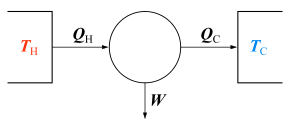THERMODYNAMICS and FREE ENERGY Multiple Choice Questions :-
1. During the unfolding reaction of a helix, breakage of each hydrogen bond requires about 2kJ/mol. This implies hydrogen bonds are
A. much stronger in proteins than in water
B. not reformed with water
C. slightly weaker in proteins than in water
D. slightly stronger in proteins than in water
Answer: D
2. If the enthalpy change for a reaction is zero, ?G° is equal to
A. T?S° B. -T?S°
C. -?H° D. lnKeq
Answer: B
3. Reactions that have positive standard free energy changes (?Go> 0) can be made to occur in cells by
A. coupling them with exergonic reactions via a common intermediate
B. manipulating the concentrations of products and reactants such that G/<0
C. coupling them to the hydrolysis of ATP
D. all of the above
Answer: D
4. The Standard Gibb’s free energy, ?G°, is
A. the residual energy present in the reactants at equilibrium
B. the residual energy present in the products at equilibrium
C. the difference in the residual energy of reactants and products at equilibrium
D. the energy required to convert one mole of reactants to one mole of products
Answer: D
5. If the Standard Gibb’s free energy, ?G°, for a reaction is positive then
A. the products will be favored
B. the reactants will be favored
C. the concentration of the reactants and products will be equal
D. all of the reactant will be converted to product
Answer: B

6. The unfolding of regular secondary structure causes
A. little increase in the entropy of protein
B. large decrease in the entropy of the protein
C. no change in the entropy of the protein
D. large increase in the entropy of the protein
Answer: D
![MCQs [2024]](https://engineeringinterviewquestions.com/wp-content/uploads/2021/02/Interview-Questions-2.png)